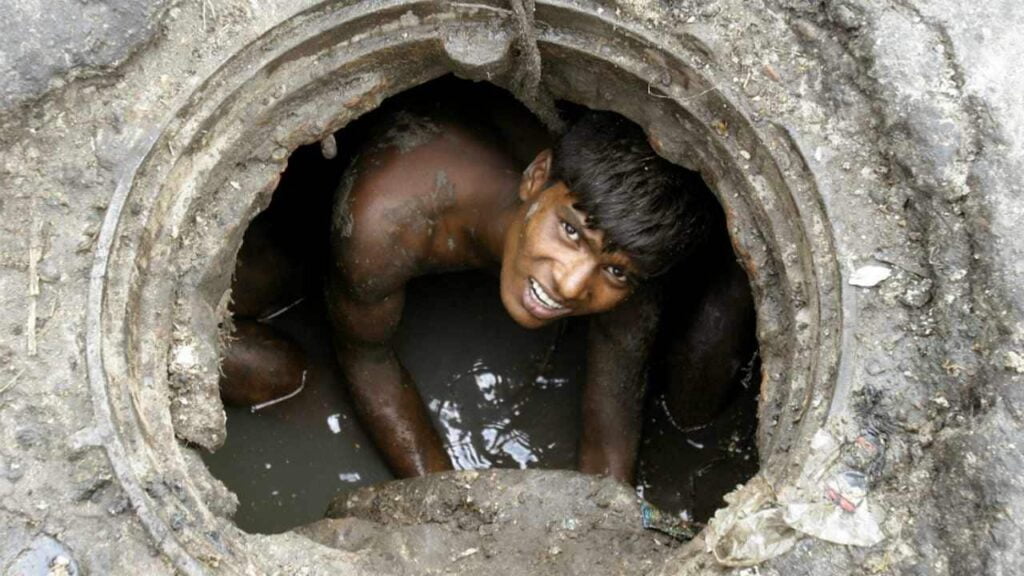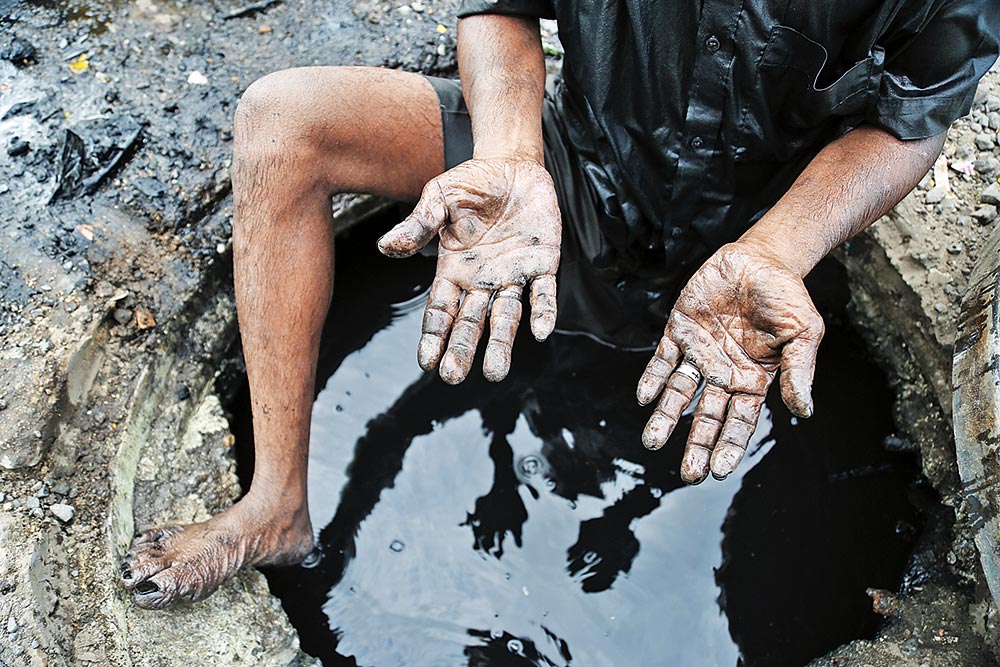The central monitoring committee of the social justice ministry stated earlier this month that all the unsanitary latrines have been made sanitary under the government’s ongoing Swachh Bharat Abhiyan and that the problem of manual scavenging has been eliminated. However, the ground reality points towards only 520 districts across the country that claim to be free from manual scavenging.
Such grand claims often subside the inhumane experiences that manual scavengers are subjected to. Their lives carry no worth in the eyes of the contractors, the law and governance or society. It is a shame that such a job still exists and that the Indian population fails to clean their own toilets in some parts of the country. A trend is prevalent in rural areas wherein the job of a manual scavenger is a social prison established to restrict them. This age-old practice seems to have found no conclusion to date.
The social exclusion factor
Manual scavenging is not just a job. It is an identity of certain individuals, and in most cases, it is also attributed to them on the basis of their caste. For decades, the Dalits have had to bear the brunt of this heinous profession. Nearly 97 per cent of manual scavengers are Dalits, as per the existing government statistics.
A very important question was raised by the Indian Express in lieu of Dalits performing the job of a manual scavenger: Would manual scavenging still exist if it was not relegated to Dalits?
No one comes into this job out of the free will and an active choice. Most people often move to bigger cities from towns and villages in search of better livelihoods.
‘This is the last job on earth one would want to do. We do this because we do not have an option. There are no other jobs for us in the market. Our identity as manual scavengers makes it even more difficult to seek employment in other sectors. Moreover, social ostracism is so strong that we even have to hide from our family members the nature of our work. If my eight-year-old daughter knows what I do for a living, she will stop eating with me,’ says Tinku, as reported by Outlook. The fact that even their own families do not view them on an equal footing, goes on to reinstate the perspective of the society at large.

There may not be a very apparent set-up but the caste factor is definitely at play here. Not only the external paradigm, but even their mental and physical health is at stake due to the nature of the job. Manual scavenging often comes with serious health hazards as its part and parcel.
Casteism at play
B.R. Ambedkar writes in his book Annihilation of Caste, ‘In my opinion, it is only when Hindu society becomes a casteless society that it can hope to have strength enough to defend itself. Without such internal strength, Swaraj for Hindus may turn out to be only a step towards slavery.’ As can be witnessed today, the internal fabric of Indian society is the exact opposite of what Ambedkar envisaged.
In fact, it is mostly the women who are engaged in this job. As an outcome, they often have to bear the brunt of double discrimination – both with regard to their caste and gender. The mere existence of such a profession shows how all the progress made so far has been a farce. In most cases, the individuals engaged in the profession only continue with the job to educate their future generations. Education seems to be the only exit from manual scavenging.
As per the statistics shared by the National Commission for Safai Karamcharis, as many as 989 human lives have been lost while cleaning underground sewage tanks across the country in the last 29 years (1993-2022). In fact, in common parlance, there’s a very derogatory term ‘Bhangi,’ used to refer to people from the caste responsible for manual scavenging. The term is thrown around casually in conversations, without even the realisation of its implications over so many disadvantaged lives across the country.

Ironically, the very dirt they keep away from localities becomes their identity marker. This is reiterated in the words of Navi Pillay, ‘Manual scavenging is not a career chosen voluntarily by workers, but is instead a deeply unhealthy, unsavoury and undignified job forced upon these people because of the stigma attached to their caste. The nature of the work itself then reinforces that stigma.’
Manual scavenging, a blot on the country
‘When one goes inside a pit full of filth and shit, one has to consume alcohol or some other form of drugs to keep the smell away and not let it impact one’s senses. Almost everyone who does this job is an alcoholic, not because they enjoy being intoxicated, but because it becomes a necessity,’ Titu says in an Outlook report.
The true statistical measures of the impact of manual scavenging have never come to the fore. The problem often stems from the government trying to pin down the actual numbers. So, how exactly do you solve a problem that no one is ready to recognise?
This is how Manisha, a manual scavenger from Mainpuri district in Uttar Pradesh describes her job, ‘I clean toilets in 20 houses every day. I use a tin plate and broom to remove the excrement that has collected in the toilet, I collect the excrement in a basket, and then I take it and throw it away. This work is so awful I don’t feel like eating.’
Such has been the helpless plight of manual scavengers for decades in India. This heinous practice is something that the country has failed to do away with. Early on, as per the feudal and caste-based segregation, women from backward communities traditionally had to do this job. Even today, we see the same ongoing trend, in reality, it was banned in 1993.
The true statistical measures of the impact of manual scavenging have never come to the fore. The problem often stems from the government trying to pin down the actual numbers. So, how exactly do you solve a problem that no one is ready to recognise?
To add to the woes, as per a survey conducted by The Wire in 2022, there has been a steady rise in the number of manual scavengers in the country, also including children. Their working conditions can be termed akin to bonded labour. In fact, Maharashtra emerged with the highest number of young boys between the ages of 8-13 employed in this profession as manhole cleaning assistants, as per the survey report. They are generally found in areas like Sangli and Satara, in a gaping number of 12,562.

All these activities have been taking place right under the nose of law and judiciary. The constitution of India states that anyone hiring children under the age of 14 will attract a term of 2 years. It falls under the category of a cognisable offence, meaning that the offender can be arrested without any prior warrant or permission of the court.
No law, governance or judiciary has been able to put an end to this practice to date. This makes one wonder if the laws of the country only find a place in trending discourses when they affect the upper-middle-class population. Because clearly, there exists no hope for the citizens from the lowered strata.
About the author(s)
Nameera (she/her) is a student of media at the Indian Institute of Mass Communication, Jammu. Discourses on gender, feminism, international relations and law interest her. She loves impromptu travelling plans, writing poetry and reading gothic literature.






